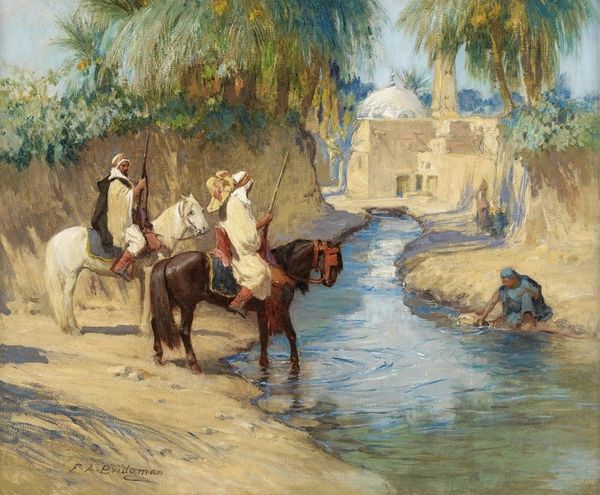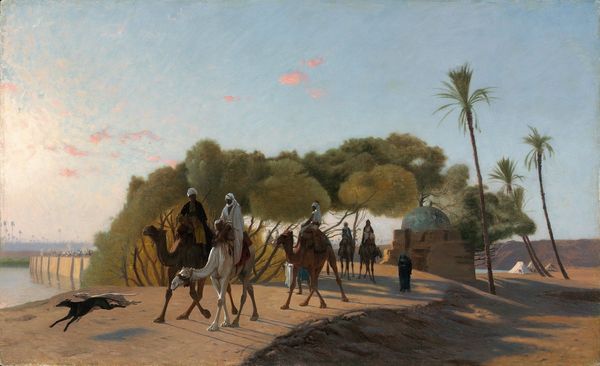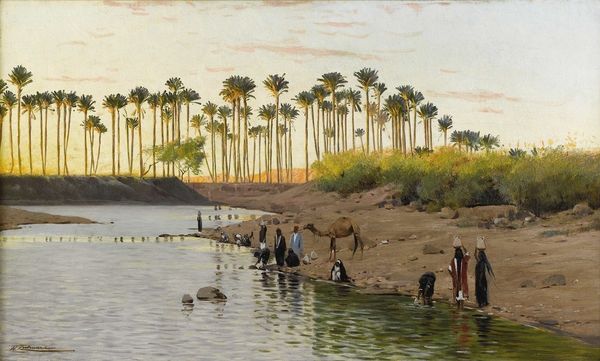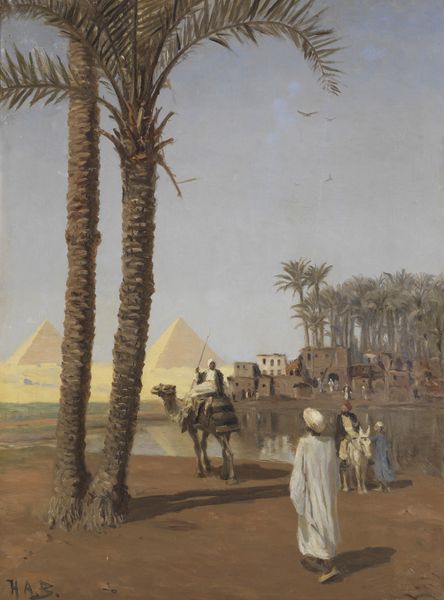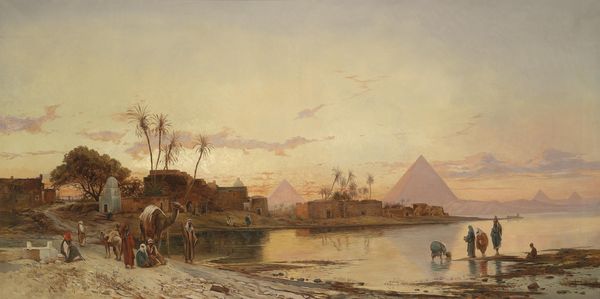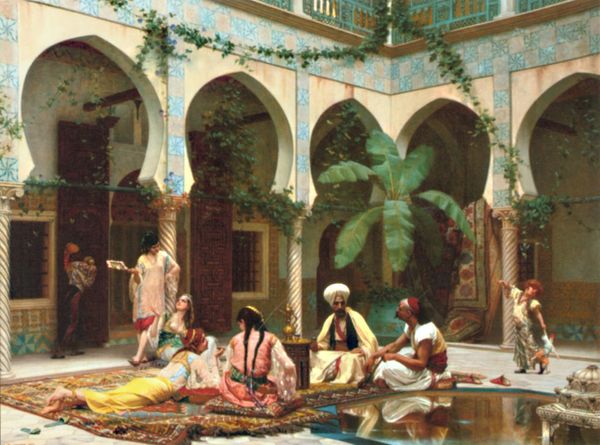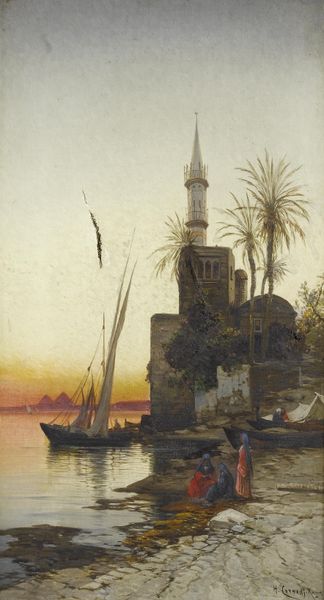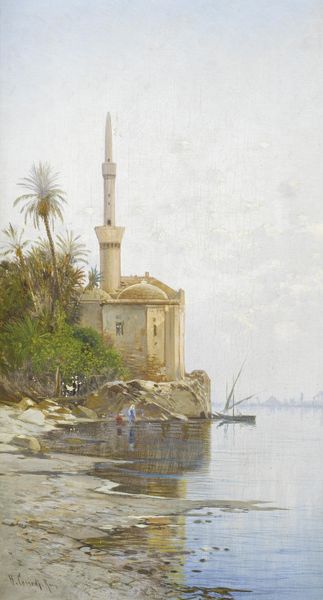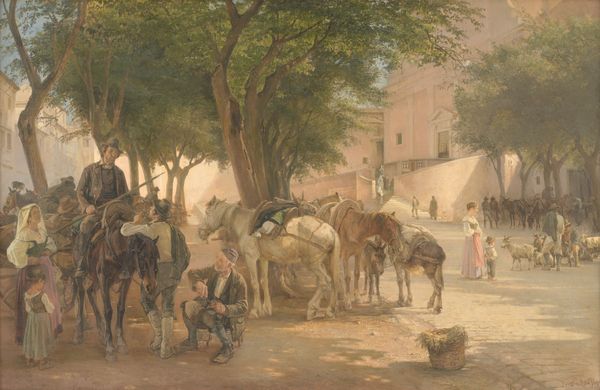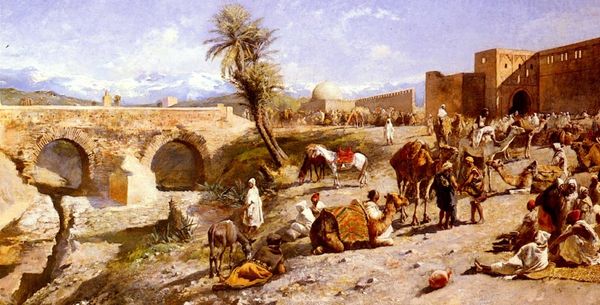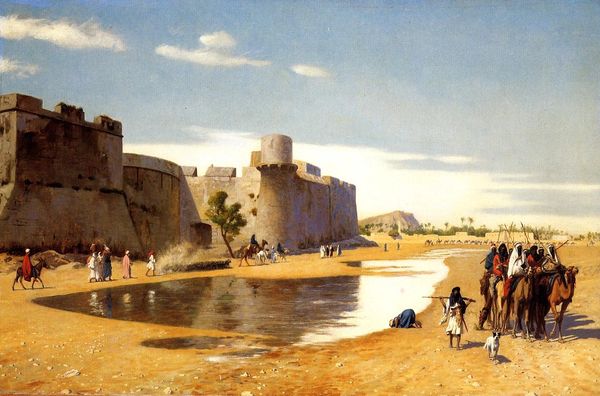
oil-paint
#
oil-paint
#
landscape
#
oil painting
#
orientalism
#
genre-painting
#
academic-art
#
realism
Copyright: Public Domain: Artvee
Curator: This is Jean-Léon Gérôme’s, "Fellah Women Drawing Water," painted circa 1873 to 1875. What strikes you initially about its composition? Editor: The serene, almost dreamlike quality. The subtle gradations of color and the horizontal layout lend the piece an airy and timeless feel. It romanticizes what I imagine was a backbreaking existence. Curator: Note the strategic placement of the women in their activities across the lower foreground, counterposed with the architecture and the minaret rising into the sky on the right side. Gérôme constructs a carefully observed triangulation here, doesn’t he? Editor: True, it’s aesthetically pleasing. But it also raises some critical questions. These women appear anonymous, part of an exoticized backdrop. Their labor, their lives, seem secondary to the artist’s formal concerns and an audience hungry for the "Orient." Where is their agency? Curator: It can be argued that Gérôme's mastery lies in capturing light and shadow, the folds of fabric, the glint of water – creating an illusion of reality. See the Realist details? Doesn't the formal acuity transcend any exploitative intention? Editor: Transcend? Perhaps that's a generous reading. He presents us with a picturesque scene that reinforces existing power dynamics between the colonizer and the colonized, especially through a male gaze focused on women engaged in work within this social tableau. It risks reducing lived realities to visual spectacle. Curator: One can recognize that critique and also appreciate his talent for rendering textures, the reflective qualities of water, the weight of those earthen jugs, the crisp rendering of architectural details. Editor: Yes, there’s craft, no question. Yet, that craft serves a vision of a world observed from a distance. One has to see that tension—the technique against the political implications of depicting these women as simply part of an Orientalist idyll. Curator: It’s precisely that interplay of observation, technique, and, as you noted, cultural context, that makes it worthy of continued engagement, no? Editor: Absolutely. Understanding those layers allows us to analyze the painting critically and engage with the history it represents with greater awareness.
Comments
No comments
Be the first to comment and join the conversation on the ultimate creative platform.

